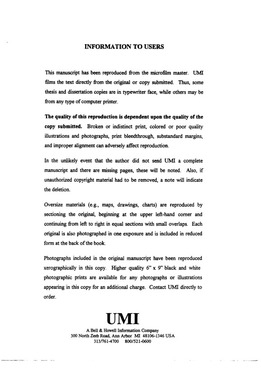| dc.contributor.advisor | Miller, Raymond B., | en_US |
| dc.contributor.author | Curda, Leslie Kay. | en_US |
| dc.date.accessioned | 2013-08-16T12:29:49Z | |
| dc.date.available | 2013-08-16T12:29:49Z | |
| dc.date.issued | 1997 | en_US |
| dc.identifier.uri | https://hdl.handle.net/11244/5514 | |
| dc.description.abstract | Confirmatory factor analysis procedures failed to produce similar findings as the Rasch procedures. This was an interesting, but not entirely unexpected result. The lack of congruence between the results of these two procedures, however, did not call into question the construct validity, but rather provided further evidence for the need to carefully consider the analytic techniques used when conducting validation studies. | en_US |
| dc.description.abstract | Rasch analyses identified a few items measuring each construct that were misfitting and subsequently eliminated. Final results provided evidence for construct validity through the final item statistics for each construct and the hierarchy of item difficulty. The Rasch results also indicated areas in which the instruments may need improvement, including creation of items assessing the higher end of the efficacy and outcome continuums in both reading and math and further examination of the functioning of the response scale categories. Acceptable measures of the internal consistency of responses to each set of items measuring a construct and estimates of the precision of the instruments in consistently measuring person ability were also found. | en_US |
| dc.description.abstract | This study provided evidence of the reliability and validity of inferences from a newly developed instrument measuring teachers' efficacy and outcome expectations in the content domains of reading and math. The instrument developed is more closely aligned with Bandura's construct of expectancy than previously developed instruments and other commonly used measures of teacher efficacy and outcome expectations in the research literature. Results of the content validity studies provided solid evidence that (a) the conceptual and operational definitions of teacher efficacy and outcome expectations were aligned with Bandura's expectancy theory, (b) the items could be identified as measuring four distinct constructs, and (c) the items represented a range of difficulty. | en_US |
| dc.description.abstract | As hypothesized, both efficacy and outcome measures were correlated with measures of effort within their domain. The pattern of correlations also offered evidence for the need to distinguish between efficacy and outcome expectations and to measure them independently. Other criterion measures, such as teacher planning and teacher engagement, were not correlated with measures of efficacy and outcome expectations as hypothesized. More well-defined variables and use of multiple indicators of planning and engagement should be developed to further investigate these hypothesized relationships. | en_US |
| dc.format.extent | xvi, 220 leaves : | en_US |
| dc.subject | Teacher effectiveness. | en_US |
| dc.subject | Teachers Attitudes. | en_US |
| dc.subject | Self-efficacy. | en_US |
| dc.subject | Education, Educational Psychology. | en_US |
| dc.subject | Education, Mathematics. | en_US |
| dc.subject | Education, Reading. | en_US |
| dc.title | Validation of a measure of teachers' efficacy and outcome expectations in the content domains of reading and mathematics. | en_US |
| dc.type | Thesis | en_US |
| dc.thesis.degree | Ph.D. | en_US |
| dc.thesis.degreeDiscipline | Department of Educational Psychology | en_US |
| dc.note | Source: Dissertation Abstracts International, Volume: 58-05, Section: A, page: 1578. | en_US |
| dc.note | Adviser: Raymond B. Miller. | en_US |
| ou.identifier | (UMI)AAI9733890 | en_US |
| ou.group | Jeannine Rainbolt College of Education::Department of Educational Psychology | |
